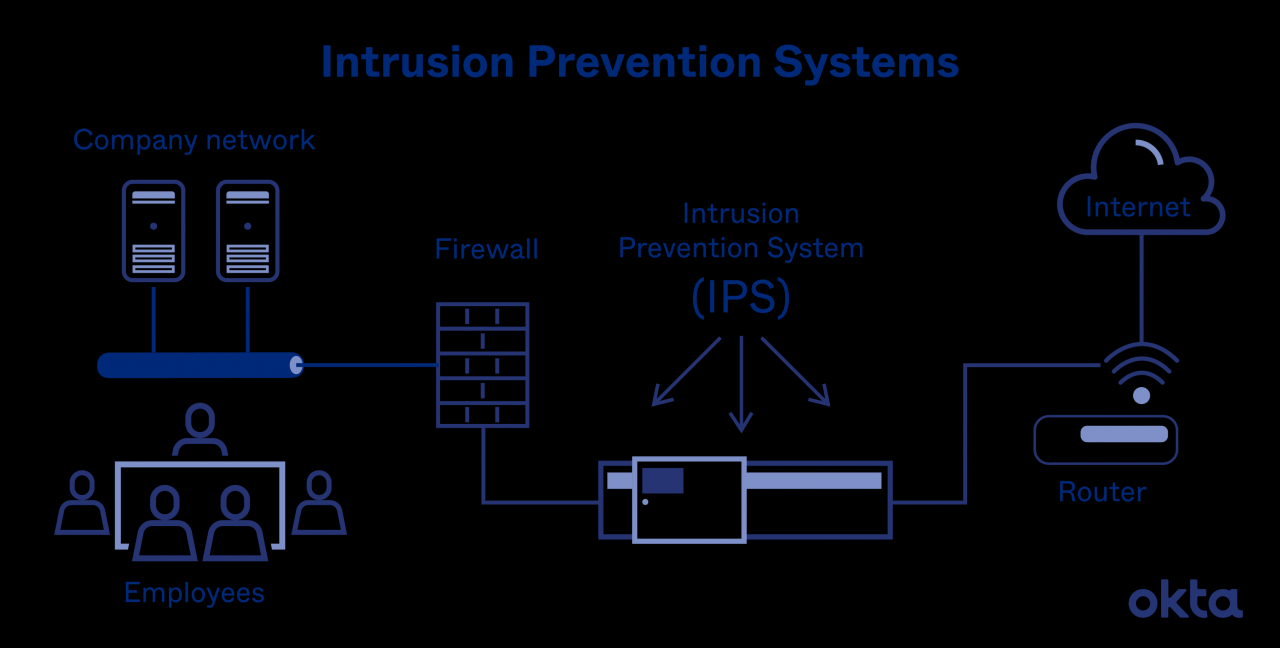An intrusion detection system cannot prevent dos attacks – An intrusion detection system cannot prevent denial-of-service (DoS) attacks, and this article will delve into why. DoS attacks differ from other threats that intrusion detection systems (IDS) can detect, and this article will explore these differences.
An intrusion detection system, while effective in detecting suspicious activity, cannot prevent Denial of Service (DoS) attacks. These attacks, like an icy small solar system body bombarding a planet, overwhelm a system with so much traffic that it becomes inaccessible.
Intrusion detection systems, like vigilant guards, can spot suspicious behavior, but they can’t stop the overwhelming force of a DoS attack.
We’ll examine various types of DoS attacks, their impact on network performance, and methods for preventing them, such as network hardening, firewalls, rate limiting, and DDoS mitigation services.
Yo, check it out! Even the baddest intrusion detection systems can’t stop those sneaky DoS attacks. They’re like the annoying little brother who keeps ringing your doorbell and running away. But hey, on the bright side, you can always beef up your defenses with an executive support system . It’s like having a personal army of cybersecurity ninjas protecting your precious data.
But remember, even with the best tools, staying vigilant and patching those vulnerabilities is key to keeping the bad guys at bay.
Understanding the Limitations of Intrusion Detection Systems
Intrusion detection systems (IDS) are designed to detect and alert on suspicious activity within a network. However, they are not effective in preventing denial-of-service (DoS) attacks.
An intrusion detection system is like a bouncer at a club, it can’t stop everyone from getting in. Just like a bouncer can’t stop someone with an inherited degenerative disease of the muscular system from entering, an intrusion detection system can’t stop a denial-of-service attack.
DoS attacks are designed to overwhelm a target system with a flood of traffic, causing it to become unavailable. IDS are designed to detect malicious activity, but they cannot prevent DoS attacks because they cannot distinguish between legitimate traffic and attack traffic.
An intrusion detection system, despite its vigilance, cannot prevent denial-of-service attacks that bombard a system with excessive traffic. To delve deeper into the intricacies of data management, an introduction to database systems provides a comprehensive overview of data structures, query languages, and transaction management.
Nevertheless, the challenge of preventing denial-of-service attacks remains a crucial aspect of cybersecurity.
Types of DoS Attacks, An intrusion detection system cannot prevent dos attacks
- Volume-based attacks:These attacks flood the target system with a large volume of traffic, causing it to become overwhelmed and unavailable.
- Protocol attacks:These attacks exploit vulnerabilities in the network protocol stack to cause the target system to crash or become unavailable.
- Application attacks:These attacks target specific applications on the target system, causing them to crash or become unavailable.
DoS attacks can have a significant impact on network performance, causing websites to become unavailable, applications to crash, and networks to become unusable.
An intrusion detection system cannot prevent DoS attacks, but an enterprise resource planning system is designed to quizlet. An enterprise resource planning system can help prevent DoS attacks by detecting and blocking suspicious activity. An intrusion detection system, on the other hand, can only detect and alert you to DoS attacks.
Closure: An Intrusion Detection System Cannot Prevent Dos Attacks

While IDS can be used to detect and mitigate DoS attacks, they have limitations. We’ll discuss these limitations and provide best practices for using IDS to minimize DoS attack impact.
Yo, an intrusion detection system is cool, but it’s like a bouncer at a party who can’t stop the whole crowd from rushing in. You need an integrated approach, like this one that looks at the whole system and makes sure the bouncer has backup.
But even then, DOS attacks can still sneak in like a ninja, so stay vigilant, my friend.
By understanding the limitations of IDS and implementing appropriate preventive measures, organizations can strengthen their defenses against DoS attacks.
Just like an intrusion detection system can’t magically prevent DoS attacks, an ideal performance management system should be correctable. If it’s not, then it’s just a glorified to-do list, not a tool for continuous improvement. Check out this article for more on the topic.
An intrusion detection system may flag suspicious activity, but it’s up to the administrator to take action and prevent an attack. Similarly, a performance management system can highlight areas for improvement, but it’s up to the employee and manager to work together to make those improvements.
FAQ Corner
What is the difference between a DoS and a DDoS attack?
An intrusion detection system cannot prevent denial of service (DoS) attacks, which can be caused by an error occurred with your system extensions during startup . These attacks flood a system with traffic, making it unavailable to legitimate users. DoS attacks can be very disruptive, and they can cause significant financial losses.
A DoS attack originates from a single source, while a DDoS attack involves multiple compromised devices (botnet) flooding the target with traffic.
Can IDS detect all types of DoS attacks?
No, IDS are not effective in detecting all types of DoS attacks, such as volumetric attacks that overwhelm the target with sheer traffic volume.
How can I prevent DoS attacks?
Implement network hardening, use firewalls, enforce rate limiting, and consider DDoS mitigation services to protect against DoS attacks.
An intrusion detection system cannot prevent DoS attacks. It can only detect them after they have occurred. This is because DoS attacks do not exploit vulnerabilities in the system itself, but rather overwhelm it with traffic. In some cases, an error occurred in the underlying security system can also be the cause of DoS attacks.
However, an intrusion detection system cannot prevent these attacks either.